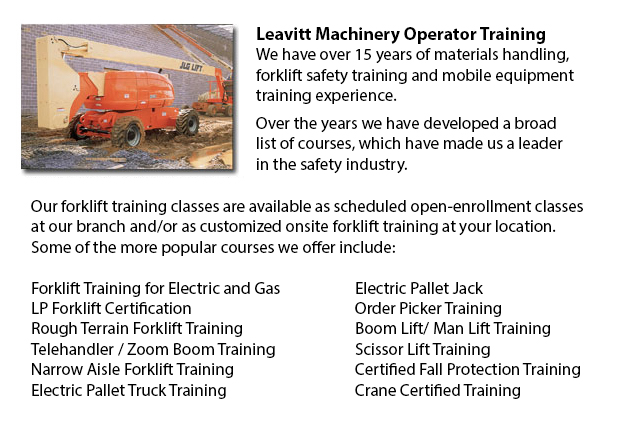
Boom Lift Safey Training Kamloops - Boom lifts fall under the type of elevated work platform or aerial lifting device. Most normally used in construction, industry, and warehousing; the boom lift is so versatile that it could be used in almost whatever surroundings.
The elevated work platform is used to allow access to heights which were otherwise unreachable making use of other means. There are risks inherent when making use of a boom lift device. Employees who operate them have to be trained in the right operating methods. Preventing accidents is paramount.
Boom Lift Training Programs include the safety factors involved in boom lift operation. The program is best for individuals who operate self-propelled boom supported elevated work platforms and self-propelled elevated work platforms. Upon successful completion of the course, Those who participated will be issued a certificate by somebody licensed to confirm completing a hands-on assessment.
Industry agencies, local and federal regulators, and lift manufacturers all play a part in establishing standards and providing information to help train operators in the safe use of elevated work platforms. The most important ways to avoid accidents related to the use of elevated work platforms are as follows: wearing safety gear, performing site assessment and inspecting equipment.
Important safety factors when operating Boom lifts:
Operators stay away from power line, observing the minimum safe approach distance (MSAD). Voltage can arc across the air to be able to find an easy path to ground.
A telescopic boom must be retracted prior to lowering a work platform to be able to maintain stability as the platform nears the ground.
Boom lift workers must tie off to ensure their safety. The lanyard and safety apparatus should be attached to manufacturer provided anchorage, and never to other wires or poles. Tying off may or may not be needed in scissor lifts, depending on particular local regulations, employer guidelines or job risks.
The maximum slope will be specified by the manufacturer. Workers should avoid working on a slope, if possible. When the slope exceeds recommended situation, the lifting device should be winched or transported over the slope. A grade could be measured simply by laying a straight edge or board of at least 3 feet on the slope. Next a carpenter's level can be laid on the straight edge and the end raised until it is level. The percent slope is obtained by measuring the distance to the ground (also known as the rise) and dividing the rise by the length of the straight edge. After that multiply by one hundred.
-
Forklift Training Course Kamloops
Forklift Training Course Kamloops - CSA and OSHA establish criteria for forklift safety training that meets current standards and regulations. Anybody planning to use a forklift is needed to successfully complete safety training prior to utilizing an... More -
Forklift Training Program Kamloops
Forklift Training Program Kamloops - The forklift is a common powered industrial vehicle which is in wide use these days. They are occasionally called lift trucks, jitneys or hi los. A departments store will use the forklift in order to unload and lo... More -
Aerial Lift Training Kamloops
Aerial Lift Training Kamloops - The mechanized access platform known as an aerial work platform is a machinery which provides access to places that are otherwise inaccessible to people and other machine. Likewise called an elevating work platform or... More -
Forklift Training School Kamloops
Forklift Training School Kamloops - Forklift Training School - CSA and OSHA establish criteria for forklift safety training which meets existing standards and regulations. Anybody planning to use a forklift is needed to successfully complete safety t... More -
Heavy Equipment Training Courses Kamloops
Heavy Equipment Training Courses Kamloops - When choosing a heavy equipment operator course, the initial step must be to determine the capacity in which you would be working with heavy machines. You could find the correct course to teach you how to o... More -
Heavy Equipment Training School Kamloops
Heavy Equipment Training School Kamloops - HEO or also known as the heavy equipment operator courses would provide you with the skills and knowledge required in order to enter the workforce as an entry level heavy machine operator. In this 12 week co... More -
Telehandler Operator Training Kamloops
Telehandler Operator Training Kamloops - Telescopic handler Forklifts or telehandler forklifts are common industrial equipment found in numerous construction industry environment. The telehandler is a helpful machinery and makes for a valuable tool w... More -
Telehandler License Kamloops
Telehandler License Kamloops - A telehandler or telescopic handler is a machine which is frequently utilized in agricultural and industrial applications. It has a similar appearance to a forklift and even works in a similar manner, though, the teleha... More

Forklift Training Kamloops
TOLL FREE: 1-888-254-6157
Kamloops, British Columbia
forklifttrainingkamloops.com
Email Us
About Us


